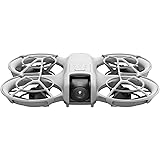The V-22 Osprey stands as a groundbreaking marvel in aviation, ingeniously combining the vertical takeoff and landing capabilities of a helicopter with the speed and range of a fixed-wing airplane. As demonstrated in the accompanying video, its unique tiltrotor design overcomes fundamental limitations faced by traditional aircraft, offering unparalleled operational flexibility.
This innovative aircraft was developed to meet military requirements for a machine that could transport troops and equipment rapidly over long distances, yet also land and take off from unprepared sites without the need for runways. The challenges involved in integrating these two distinct flight modes were significant, leading to the creation of a truly revolutionary design.
Understanding the Hybrid Aircraft Advantage
Conventional helicopters are recognized for their ability to hover and take off or land vertically, making them indispensable for operations in confined spaces. However, their design, reliant on large, rotating blades, inherently limits their forward speed. At high speeds, the rotor blades encounter aerodynamic complexities, where the advancing blade moves much faster than the retreating blade, leading to a phenomenon known as “blade stall.”
Fixed-wing airplanes, conversely, are built for speed and efficiency at altitude, leveraging the lift generated by their wings as they move rapidly through the air. These aircraft achieve impressive speeds and cover vast distances, but they require substantial runways for takeoff and landing because their wings lose lift at low airspeeds, also known as “wing stall.” This limitation restricts their operational environments.
How the V-22 Osprey Overcomes Limitations
The brilliant engineering of the V-22 Osprey directly addresses these inherent design trade-offs. It effectively transitions between helicopter mode and airplane mode by pivoting its two engine nacelles, which house the rotors, through a 90-degree arc.
When vertical flight or hovering is required, these nacelles are tilted upwards, making the rotors function like those on a helicopter. This allows the Osprey to ascend or descend vertically and to hover stationary in the air. For forward flight, the nacelles are gradually rotated forward, transforming the rotors into propellers that provide thrust for horizontal movement, while the fixed wings provide lift, similar to a conventional airplane.
The Engineering Behind Tiltrotor Technology
The development of tiltrotor technology was a formidable engineering challenge, requiring advanced materials and sophisticated flight control systems. A seamless transition between the two flight modes is critical for safety and performance.
Much research and testing were dedicated to perfecting the mechanism that allows the nacelles to pivot smoothly during flight. This complex system ensures that aerodynamic forces are managed effectively across the entire flight envelope, from stationary hover to high-speed cruise.
Operational Flexibility and Mission Adaptability
The unique capabilities of the V-22 Osprey provide significant strategic advantages, particularly for military applications. It is capable of transporting personnel, equipment, and supplies across a wide range of distances and terrain types.
For instance, the Osprey can take off from a ship’s deck or a remote forward operating base, fly at speeds comparable to turboprop aircraft, and then land directly at its destination, even if no runway is available. This adaptability makes it an invaluable asset for various missions, including combat assault, special operations, humanitarian assistance, and search and rescue.
Key Advantages of the V-22 Osprey
The V-22 Osprey offers several distinct benefits that set it apart from its single-mode counterparts:
- Increased Speed: It is significantly faster than any conventional helicopter, reducing transit times for personnel and cargo.
- Extended Range: The fixed-wing airplane mode allows for a much greater operational range compared to helicopters, which are often limited by fuel consumption and slower speeds.
- Versatile Deployment: The ability to operate without runways enables deployment to austere and remote locations, enhancing its strategic utility.
- Maneuverability: It retains the essential maneuverability of a helicopter for precision operations in confined areas, alongside the agility of a plane in forward flight.
This remarkable design has fundamentally changed how certain military operations are conceived and executed, providing an innovative solution where both speed and vertical landing capabilities are paramount. The V-22 Osprey continues to be a cornerstone of modern military aviation, demonstrating the power of hybrid aircraft technology.











